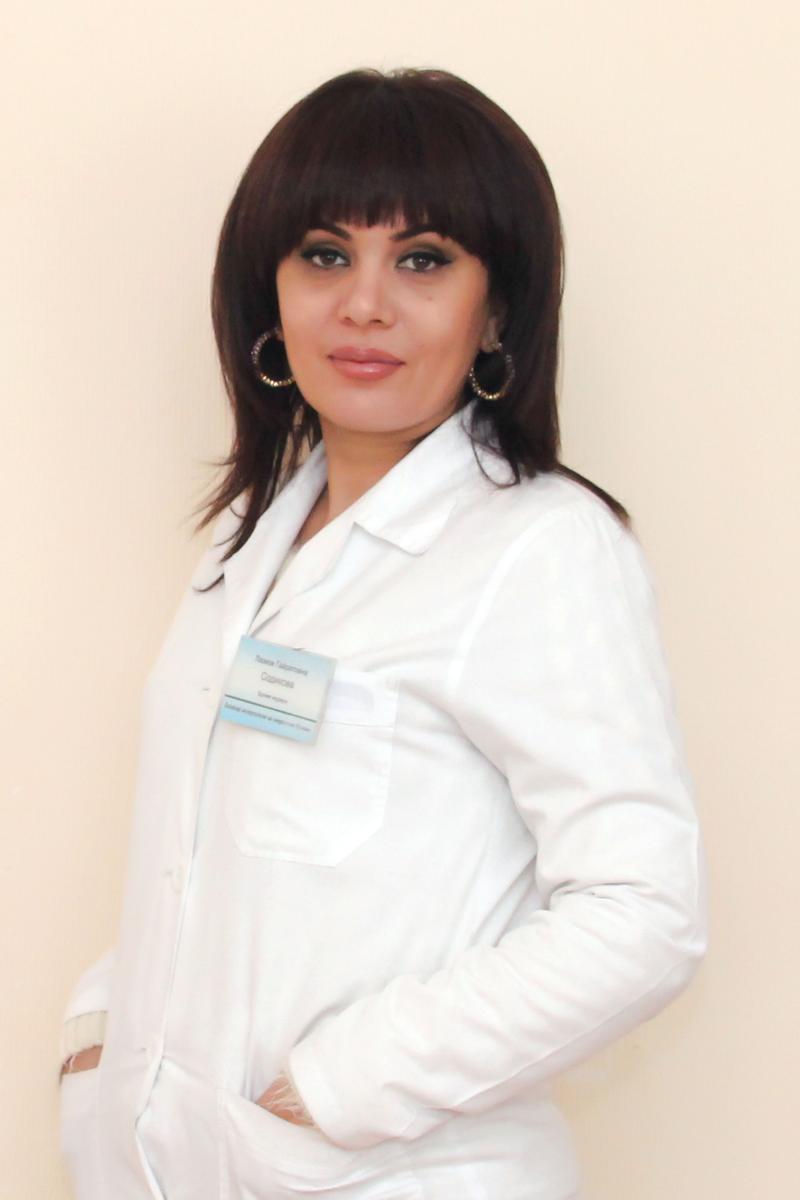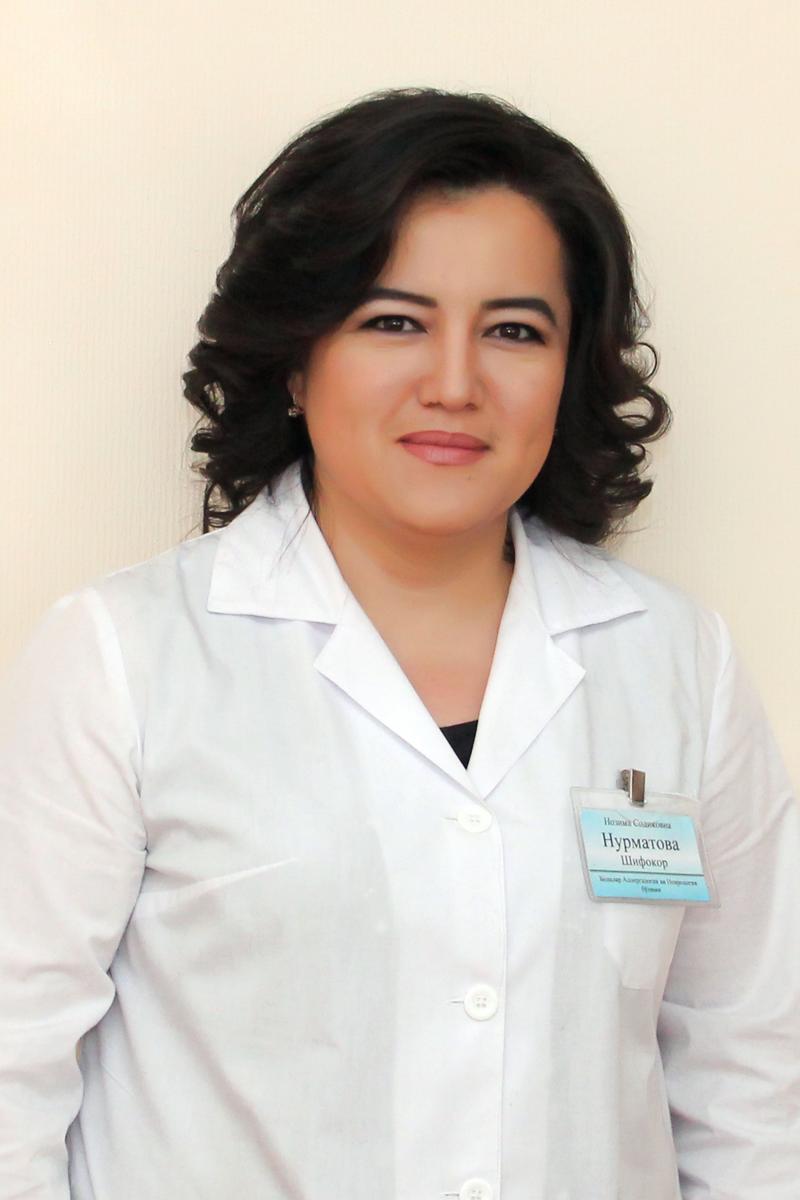The department is located on the 2 floor of 14's unit of Tashkent Medical Academy.
Department of Pediatric Allergology and Neurology of Tashkent Medical Academy was formed under the cathedrae of "Childhood Disease" and "Neurology" in Tashkent State Medical Institute. Patients are receiving in admission room as matter of urgency and scheduled in consultation service.
There are 22 wards in the department, which are aimed for mother and child. Department of Pediatric Allergology and Neurology is used to diagnose and treat children allergic and neurologic diseases. Department meant for 32 beds. 15 of them to treat allergic diseases and the rest to treat children suffering acute and chronic diseases of nervous system.
There are two the first-category neurologists and one the highest-category allergist and one the first-category allergist working in the department.
From 2000 were defended one doctoral dissertation and five PhD dissertations on the basis of pediatric allergy and neurology. Along with the clinical works, doctors carry out scientific researches and take part in international congresses and conferences. Supervisors of pediatric allergy and neurology are the Head of the Department of Pediatrics Professor B.T. Kholmatova and head of the Department of nervous diseases professor G.S. Rakhimbaeva. Clinical work in department held under the work plan approved by the Ministry of Health of the Republic of Uzbekistan. Patients are serviced by doctors of highest category.
The department treated sick children at the age from 1 year to 18 years. The department promptly diagnosed allergic and neurological diseases, the treatment and it’s prognosis also planned and carried out. To this end, the department has 15 beds for allergic and 15 beds for neurologically ill children. The department employs allergist doctor and neurologist, as well as the department has a duty neurologist. On the wing where they treat allergic diseases, diagnosis and treatment of the following diseases is made:
-bronchial asthma
-recurrent obstructive bronchitis
-respiratory allergosis
-dermatotis
-pollinosis
-allergic conjunctivitis Reno
-food and drug allergy
Patients undergo the following examination:
-clinical examination
-biochemical blood tests
-immunological studies
-ECG
-echocardiography
-ultrasonic investigation
-chest X-ray
-spirography
-echoencephalography
-rheoencephalography
-electroencephalography
-transcranial Doppler
-computerized axial tomography
-magnetic resonance imaging
-duplex examination of the blood vessels
There is a room "mother and child" and Asthma- school. In the ward doctors conduct interview with mothers of patients on the theme:
- healthy lifestyle
- Family planning
- The right child care
- Prevention of infectious diseases
- Information about the anatomy, physiology of breathing, the essence of the disease
- Allergy, it's prevention and treatment
- A hypoallergenic diet and environment in the house
- Bronchodilators drugs and hormone treatment of asthma
- Tactics assist in a fit of suffocation
- Inhalation drug delivery systems
- Self-algorithm during attacks of breathlessness
- Methods of self-monitoring of disease course and assessment of the system of "color zones"
- Discussion of action plans for patients at the time of exacerbation of asthma and in remission
- Colds and asthma (treatment and prevention of respiratory viral infections)
- How and where to treat asthma exacerbations
The task of the health school for patients with bronchial asthma:
- To give the patient and his family the representation of his disease, tell about the possibilities of nowaday's treatment of bronchial asthma.
- to allow the patient and his family to assess the severity of his condition and the adequacy of asthma treatment.
- To teach the patient and his relatives themselves to recognize an approaching deterioration in the course of asthma and to prevent it.
- To teach the patient and his relatives self-help techniques when developed asthma.
- To explain the purpose of such devices for individual use as a spacer and peak flow meter, inhaler, nebulizer.
- In the practical part of classes to teach patients and their relatives proper technique of inhalation, use peakflowmeter, spacer.
- To help the patient and his relatives follow the advice of a doctor, as it depends on the success of asthma treatment.
On the wing where neurological diseases are treated, specialists conduct diagnosis and treatment of the following diseases:
- acute and chronic inflammatory diseases of the brain
- Idiopathic and symptomatic epilepsy
- Epileptic encephalopathy
- Hereditary diseases of the Central nervous system
- Degenerative diseases of the Central nervous system.
- Acute and chronic diseases of the blood vessels
- Treatment of post-traumatic effects of the Central nervous system
- Acute and chronic inflammation of the peripheral nervous system
- Traumatic complications of the Central nervous system
- Acute and chronic inflammatory diseases of peripheral nervous system
- Malformation of the nervous system
- Cerebral palsy
- TORCH induced encephalopathy
- Minimal brain dysfunction
- Diseases of metabolic disorders
- Diseases of the autonomic nervous system
- Consequences of perinatal lesions of the nervous system
SPECIALISTS

Лазиза Гайратовна Садыкова
Allergologist
– заведующая отделением

Назима Садыковна Нурматова
Neurologist